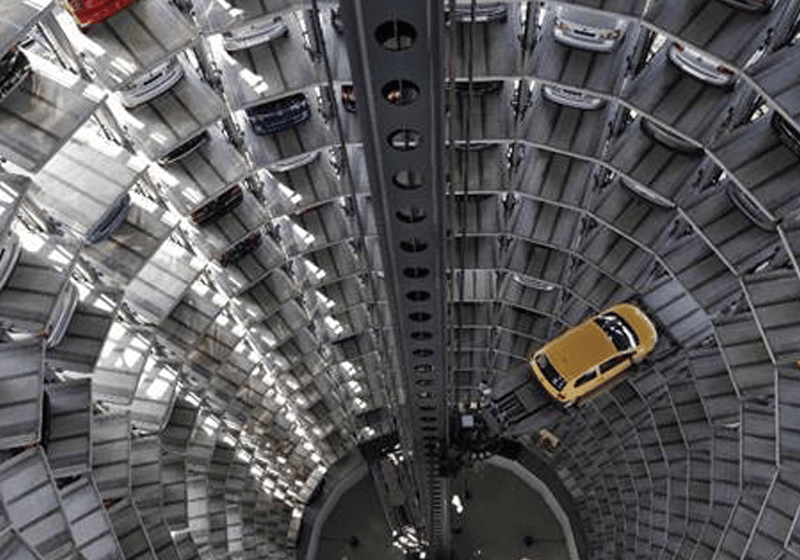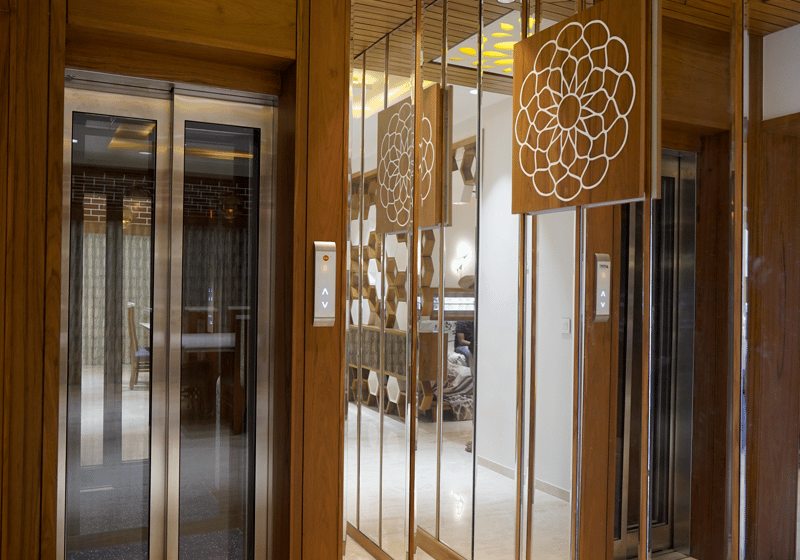Adherence to ancient architectural science brings harmony to homes in general and elevators specifically.
We often come across low-rise projects in which a new owner installs elevators in a bungalow, villa or row house. These days, several developers have begun to incorporate elevators in such projects right from the planning stage. Since the architectural principles of Vastu were set out before elevators or escalators were conceptualized, those who are in the process of buying a plot or a move-in-ready residence occasionally wonder if they are going about the process properly.
After all, while there aren’t any rules for installation of vertical transportation (VT), is there the possibility of any contraindications that may be applicable? Just as some medicines clash, would the installation of an elevator in a particular space or area affect the overall harmony of the house, be it a low-rise structure or an apartment in a high-rise tower?
“A property with a lift well opposite facing the front door is a major Vastu issue,” says Nitien Parmar, chief Vastu consultant, Vastu Plus. “Your front door should not face the elevator or staircase. All of your efforts and hard work will fly away and down through the fast-moving energy of the staircase and elevator.”
Elaborating on the significance of Vastu for real estate, Parmar says:
“Vastu is a cosmic, ancient science based on five elements of nature and different directions, i.e., east, west, north and south. Vastu Shastra (also known as Vasthu or Vaastu) is one of the most ancient sciences of Indian architecture and is composed of specific rules, regulations and directions set down by sages of the Vedic times. For today’s modern society, it is a highly evolved, comprehensive building philosophy. According to Vastu, a building or premises is a living organism and can be designed in harmonic resonance with the underlying energy structure of the universe. Such a building or premises becomes a generator of coherence, attuning the occupants to the universal laws and increasing health, wealth and spiritual well-being.”
Obviously then, keeping Vastu principles in mind, there would be certain aspects that need to be ensured while buying a residential plot. Nitien advises that one should try to select a square- or rectangular-shaped plot. Avoid buying land with a hill or mountain toward the east or north direction, but a plot with a solid rock mountain toward the southwest will ensure stability and support in life. Avoid buying a plot with a nearby waste management site or hospital. Do not buy a property located at a “T” junction, as the flow of energy focusing on the house is highly damaging. A large, downward opening toward the south or west of the home can leave you unprotected.

Nitien Parmar
Nitien Parmar, chief Vastu consultant, Vastu Plus, is a practicing Vastu expert from Mumbai. He has a diploma in Vastu Shastra and has authored books on the practice, including Vastu aur Pyramid, and Amazing Pyramids for Vastu. He is supported by a team of experienced Vastu experts who, working under his guidance since 1991, research, study and practice Vastu. The team’s clients include corporations, doctors, lawyers, actors, chartered accountants, architects, builders, hotels, hospitals, supermarkets, therapists, industrialists and retailers.
So then, our next concern is, what’s the right stage to consult an expert and verify whether the plot is Vastu-compliant or not? Here, Nitien has a rather straightforward answer, followed by his observation of a rather amusing or irritating trend to the contrary:
“We found some people rush to Vastu experts when they have already gone halfway through the construction process. In reality, it is necessary to evaluate the surroundings even before buying a plot. River, hills, roads, religious places, etc., play an important role in the success of any site as per Vastu. For instance, one should avoid property with any major corner extensions, corner cuts and a slope. While planning the layout of the house, ideal Vastu principles state that the central area known as a ‘brahmasthan’ should not be heavy. It should be free from any obstructions like pillars, staircases, walls, etc.”
Maximum Benefits
According to Nitien, the width and height of an ideal house building should not exceed a 1:2 ratio, in order to draw maximum benefits from the site. If you need to build an additional floor or loft, it is advisable to create it in the southwest or west area. This will act as a shock absorber during hard times, and also protect the sources of income. It is a morale booster to inspire people to get going when things are tough. More weight and height on the southwest are like a solid foundation for good health and prosperity, Nitien affirms.
Get more of Elevator World. Sign up for our free e-newsletter.






